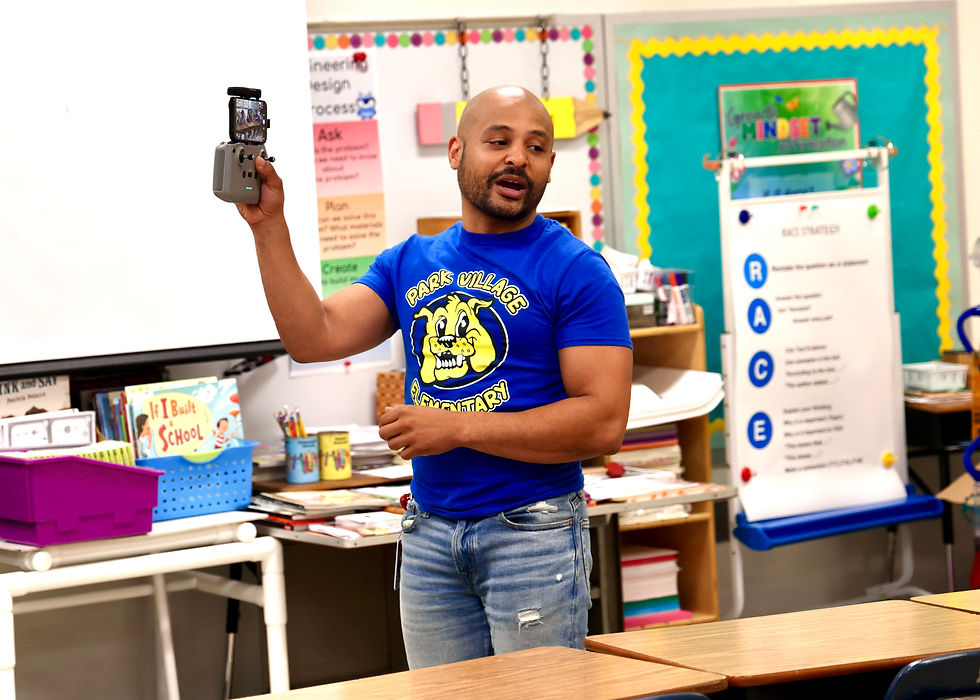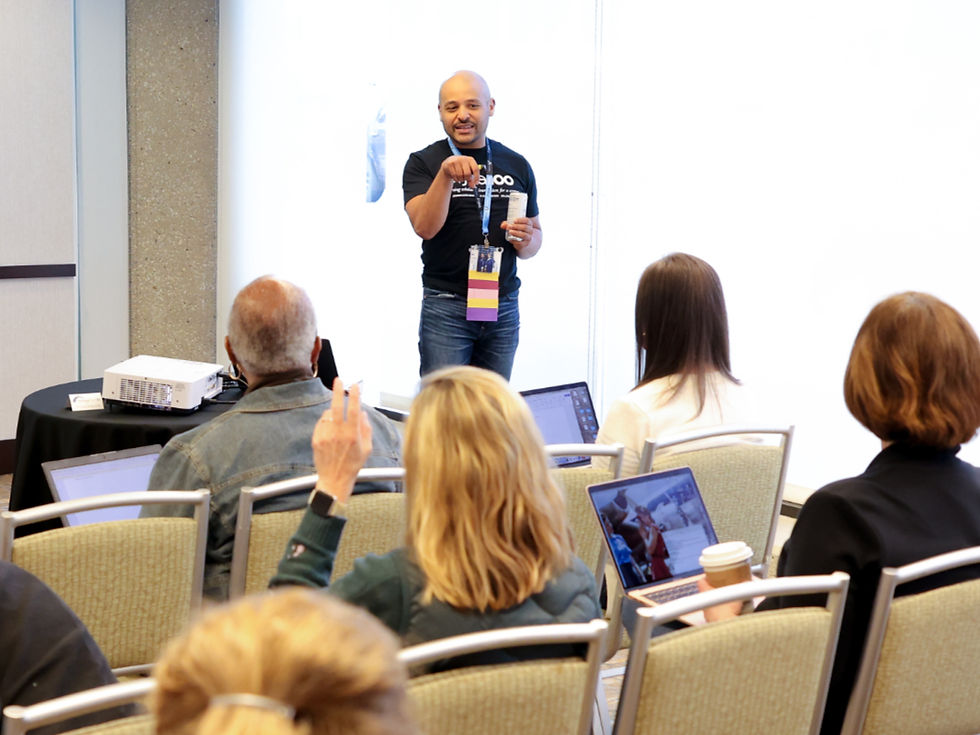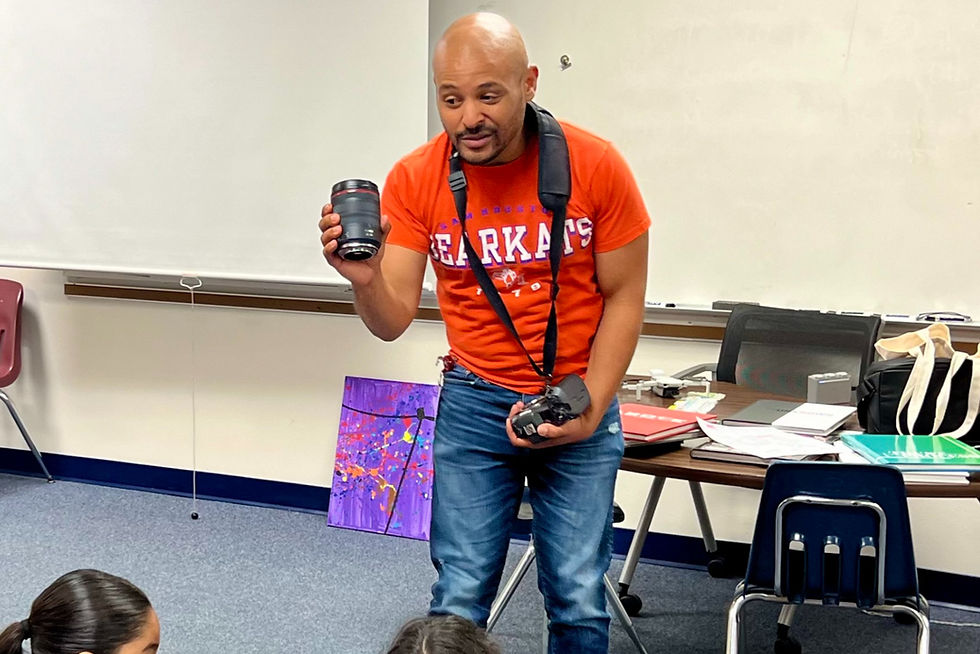Media Literacy should be required in K-12 classrooms
- Pedro J. Cabrera
- Jun 9
- 9 min read
Updated: Oct 12
In September 2024, the CT Mirror reported that a Hartford Public High School graduate could not read or write. Aleysha Ortiz, who moved to Hartford from Puerto Rico with her family at a young age, felt pushed “haphazardly through the school system.”
In the same conversation, New York Magazine noted that college students use ChatGPT to cheat their way through college. A survey of 1,000 college students revealed that nearly 90% had utilized the chatbot to assist with homework assignments.
A quote from that article was startling. “Students are going to emerge from universities… essentially illiterate.”
Literacy takes many forms, all of which are essential for navigating society's complexities. Traditional literacy begins with reading—the ability to understand and interpret written language, which serves as the foundation for learning and communication. Writing complements reading by allowing individuals to express their thoughts, ideas, and information clearly and effectively.
However, in addition to those foundational skills, media literacy has become increasingly important in the digital age. It encompasses the critical analysis, evaluation, and creation of messages across various media platforms, enabling individuals to distinguish credible information from misinformation and responsibly engage in a media-saturated society.
The proliferation of various media forms has transformed the way information is produced, shared, and consumed. With social media, user-generated content, and particularly artificial intelligence, anyone can instantly publish information to a global audience.
While the democratization of media offers many benefits, it has also led to an overwhelming flood of content, much of which is unchecked, misleading, or deliberately false. Misinformation and disinformation now spread rapidly, often outpacing efforts to verify facts or correct falsehoods. This situation makes it increasingly difficult for young people without formal media literacy training to distinguish between credible sources and manipulative content, especially when algorithms prioritize engagement over accuracy.
As a society, we are graduating illiterate young people who will ultimately become illiterate college students and illiterate colleagues in the workplace. Just as we cannot ignore reading and writing skills, we also cannot overlook media literacy skills. They are vital in K–12 education.
Teaching students how to critically evaluate media, understand its motives, and recognize bias or manipulation is no longer optional—it's foundational for developing an informed electorate. It empowers students to navigate the digital world thoughtfully, question what they see and hear, and become responsible consumers and creators of content.
By integrating media literacy into the curriculum and promoting journalism education, schools can equip students with the tools to thrive in a complex media landscape and participate meaningfully in a democratic society.
The Importance of Media Literacy in the Digital World
The National Association for Media Literacy Education defines media literacy as “the ability to access, analyze, evaluate, create, and act using all forms of communication.” It goes beyond simply understanding how to use media tools; it involves critically engaging with media content to understand its purpose, message, and impact.
The scope of media literacy involves recognizing bias and propaganda, identifying credible sources, understanding how media shapes perceptions and influences behavior, and creating ethical and practical media messages. It encompasses various formats—news articles, social media posts, advertisements, videos, and more—empowering individuals to be thoughtful consumers and responsible information producers in a media-saturated world.
Today's media landscape is becoming increasingly complex and challenging, primarily due to the rise of misinformation and disinformation.
The American Psychological Association defines misinformation as “false or inaccurate information”, and disinformation as “false information intentionally intended to mislead, deliberately misstating the facts.”
The speed and reach of digital platforms amplify both factors. Social media algorithms often prioritize sensational or emotionally charged content, making spreading false narratives virally easier.
During the 2025 California wildfires, social media platforms were inundated with manipulated visuals and misleading narratives, including an image of the Hollywood sign on fire. Some posts claimed that fire crews from neighboring states were being turned away due to regulatory issues. In contrast, others shared AI-generated images that exaggerated the scale or misrepresented the locations of the fires. The falsehoods spread rapidly, prompting FEMA and Los Angeles Fire Department officials to initiate public campaigns to debunk the rumors and provide accurate updates.
Content that sensationalizes situations creates echo chambers, where users are primarily exposed to information confirming their beliefs. This further polarizes public discourse and undermines trust in traditional news sources.
This is further compounded by the rapid advancement of artificial intelligence, which has introduced new tools for generating highly realistic yet entirely fabricated content. Deepfakes, AI-generated text, and synthetic images can impersonate individuals, manipulate public opinion, or spread falsehoods with unprecedented sophistication. This phenomenon blurs the line between reality and fiction, making it increasingly difficult for even savvy media consumers to distinguish truth from falsehood.
Student-Led Journalism is a Catalyst for Media Literacy
The Journalism Education Association is the largest scholastic journalism organization in the nation, committed to fostering free and responsible student media. The organization equips journalism educators with professional development, teaching resources, and a robust support network, designed to assist students in creating high-quality, ethical journalism. This ensures they have the tools and freedom to share their stories with integrity and impact.
Journalism education serves as a powerful vehicle for fostering media literacy in K-12 schools.
By researching, interviewing, writing, and editing, students acquire the skills to evaluate sources, recognize bias, and communicate responsibly and critically—essential skills in today’s complex media landscape.
It also empowers students' voices and agency by equipping them with the tools to critically engage with the world and express their perspectives clearly and confidently. Through hands-on experiences in reporting, interviewing, and storytelling, students learn to investigate issues that matter to them and their communities, fostering a sense of ownership over their narratives and creating hyperlocal reporting.
Journalism classrooms enhance communication skills and foster civic awareness and responsibility. By understanding media's ethical and societal impact, students become more informed participants in democratic discourse, capable of challenging dominant narratives and advocating for change. Journalism education transforms students from passive information consumers into active, empowered storytellers and change-makers, developing their analytical and critical thinking abilities.
Critical Media Literacy: Beyond Basic Comprehension
Beyond journalism education and its role in media literacy, it teaches students to recognize media bias, framing, and ownership. It encourages learners to identify and assess media bias, understand how framing shapes public perception, and consider the implications of media ownership on content and editorial decisions. By studying these areas, students become more discerning consumers and producers of information.
A critical aspect of media literacy is analyzing sources and fact-checking, which is essential to ensure information accuracy, credibility, and integrity.
In an era when misinformation and disinformation can spread rapidly through digital platforms, the ability to critically evaluate the origin and reliability of information is more crucial than ever. By analyzing sources, students can assess the authority, purpose, and potential bias behind the content, enabling them to distinguish between trustworthy and questionable material. Moreover, fact-checking strengthens this process by verifying claims against established evidence and reputable sources. These skills empower individuals to make informed decisions, engage in meaningful discussions, and contribute to a well-informed society.
When students learn to recognize persuasive techniques and understand the algorithms used in media, they become more empowered and critical media consumers.
Many media entities and news organizations frequently employ persuasive techniques, including emotional appeals, repetition, celebrity endorsements, and loaded language, to shape opinions and behaviors. By recognizing these strategies, students can evaluate the intent behind messages more effectively and guard against manipulation.
Additionally, understanding how the robust media algorithm operates—specifically how platforms prioritize content based on user behavior—helps individuals realize that what they see online is often curated to reinforce their beliefs and preferences. This awareness encourages pursuing diverse perspectives, questioning the content they consume, and making more informed choices about their media engagement.
Integrating Media Literacy into the Curriculum
Teachers can integrate media literacy into the curriculum across various subjects by incorporating critical thinking and digital analysis skills into daily lessons.
In English classes, educators can guide students in analyzing news articles, social media posts, and political media to examine tone, bias, and persuasive language, helping them understand how language shapes perception. They can also encourage students to create their media, such as blogs or podcasts, to apply these skills in practice.
In Social Studies, a media literacy curriculum can explore how historical events are depicted differently across various sources, encouraging discussions about perspective, propaganda, and the media's role in shaping public opinion. Teachers can assign projects requiring students to compare news coverage from different countries or periods to underscore bias and framing.
In technology classes, students can explore how algorithms influence the content they see online while learning about data privacy and the workings of search engines and social media feeds. This technical knowledge helps demystify the digital environment and encourages more mindful media consumption.
In civics classes, media literacy is a tool for democratic engagement, aiding students to evaluate political messages, campaign advertisements, and public statements for their credibility and intent. Teachers can facilitate debates and simulations that require students to research and fact-check claims, fostering informed citizenship.
Integrating media literacy into these subjects allows educators to enhance academic learning and equip students to navigate and contribute to a complex, media-saturated world. The ultimate goal is to follow the lead of states like California, which mandates media literacy in their curriculum.
Ideally, a stand-alone media literacy course would be crucial.
It would give students the time and space to develop the critical skills necessary to navigate an increasingly complex media landscape. Unlike brief lessons incorporated into other subjects, a focused course facilitates in-depth exploration of topics such as media bias, misinformation, digital citizenship, advertising strategies, and the impact of algorithms on content consumption.
Students can participate in hands-on activities, such as analyzing news sources, creating multimedia projects, and conducting fact-checking exercises, which deepen their understanding and application of these concepts. The class can also encourage discussions about the ethical responsibilities of both media producers and consumers, prompting students to think critically about their own media habits and the broader societal impact of media.
A stand-alone media literacy course would ensure that schools don't graduate media-illiterate students by equipping students with the tools to question, evaluate, and create media responsibly.
Practical Steps for Educators and School Leaders
Several national organizations advocate for media literacy and journalism education, offering teachers and students resources to facilitate effective learning in the classroom.
The Journalism Education Association supports scholastic journalism and media education by providing resources, professional development, and advocacy for journalism teachers and student media programs.
The National Scholastic Press Association promotes excellence in student journalism by offering awards, educational resources, and support for high school and college media programs across the United States.
The Student Press Law Center supports and defends the First Amendment rights of student journalists and their advisers through legal assistance, education, and advocacy.
The News Literacy Project empowers educators and students to become smart, active consumers of news and information by providing resources and programs that promote critical thinking and media literacy.
The Foundation for Individual Rights and Expression is dedicated to defending and promoting the individual rights of all Americans, particularly freedom of speech, through legal advocacy, public education, and policy reform.
The National Association for Media Literacy Education promotes media literacy education by providing resources, professional development, and advocacy to help individuals access, analyze, evaluate, create, and act using all forms of communication.
One of the most notable efforts to enhance media literacy and journalism education in the country is Press Pass NYC in New York City. This nonprofit initiative is dedicated to revitalizing student journalism in public schools, particularly those serving under-resourced communities. The program assists schools in launching and sustaining student-run newspapers by providing comprehensive resources such as teacher training, curriculum development, and student leadership opportunities.
The initiative centers on project-based, community-focused learning, helping students develop critical thinking, media literacy, and communication skills. By fostering a culture of student voice and journalistic inquiry, Press Pass NYC enhances educational outcomes and empowers young individuals to engage meaningfully with their communities and the broader media landscape.
Districts and states can support schools by adopting a multi-faceted approach encompassing funding, partnerships, and policy support.
States can support schools by incorporating media literacy education into academic standards and curricula across all grade levels. By requiring media literacy education, states ensure students develop the critical thinking skills to analyze, evaluate, and create media responsibly. States can also provide funding for media literacy initiatives, including grants for curriculum development, partnerships with media organizations, and access to digital tools and resources. Furthermore, state education departments can collaborate with universities and nonprofits to create statewide frameworks and guidelines that assist schools in effectively implementing media literacy instruction.
At the district level, professional development is essential for equipping educators with the skills and confidence necessary to teach media literacy effectively. Districts can organize workshops, training sessions, and ongoing learning communities to identify misinformation, understand media bias, and teach digital citizenship. Collaborating with media literacy experts and organizations can enhance the quality of these programs.
Districts should also provide teachers with access to current teaching materials and digital tools while encouraging cross-disciplinary collaboration to ensure that media literacy is integrated into subjects beyond language arts and social studies. By investing in training, districts guarantee that media literacy becomes a sustainable and impactful part of student learning.
Media literacy and journalism education are not merely academic tools—they are vital life skills that empower students to become discerning consumers and ethical digital media producers. In a world overflowing with content, these disciplines equip students to understand how media shapes perceptions, influences decisions, and affects democracy.
Journalism education fosters curiosity, integrity, and a commitment to truth, encouraging students to seek facts, ask critical questions, and elevate the voices of the underrepresented.
Together, journalism education and media can promote a generation of thinkers who are informed and ready to engage meaningfully in civic life.
Schools have been slow to address this issue, so now is the time for education systems to integrate media literacy into curricula, support student journalism programs, and provide teachers with essential training and resources. By doing so, education systems can equip students to graduate as media-literate individuals, achieve success in school and beyond, and lead with insight and integrity in the larger world.


